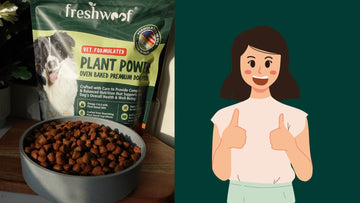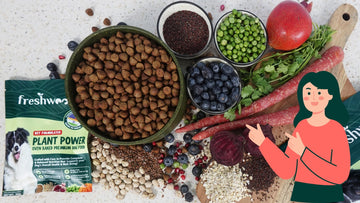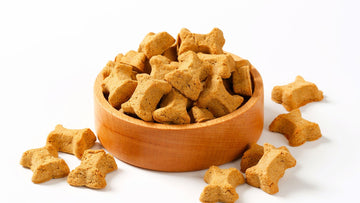You may think the fat dogs are adorable just the way they are, but the truth is they could already be at risk for multiple health problems. As responsible pet-parents, we must make sure that our furry friend is in shape.
You can seek your vet’s counsel on your dog’s ideal weight, as a rule of thumb, 15% above that weight is obese; zero to 15% is overweight. If your dog falls into either category, they are not alone. According to a 2011 study, 53% of dogs are overweight or obese and the majority of pet owners are either unaware or in denial of the very real danger, this poses to their beloved companions. A quick way to assess whether your dog is overweight or obese at home is to ask:
- Does your dog have an hourglass shape when you stand behind them and look down?
- Do they have a waist when your look from the side?
- Can you easily feel their ribs?
If your answer to these questions is no, then your dog needs to shed some of their weight.
Here are some tips for helping your dog shed some of their extra pounds and maintain a good body condition:
Feeding the right amount:
Dogs gain weight the same way humans do, by eating too much and exercising too little and food is far by the most important factor in reducing your dog’s weight. We have to get specific about how much we should feed our pets which is determined by the number of calories your dog needs per day. Many factors will influence your dog’s dietary needs, including breed, size, age, etc.
Feeding in small portions
Taking your dog’s total daily ration and dividing it up into three to six portions can be helpful as small meals require energy to digest which can burn calories.
Cut down on meat
Meat and meat-based products contain a high amount of energy and fats which can lead to obesity and obesity-related diseases. Increase the number of fruits, vegetables, grains, and legumes consumed, while decreasing usual reliance on animal protein. Plant-based ingredients are high in fiber, which is not absorbed into our bloodstream. So some of the weight of these plant foods does not translate into calories absorbed and at the same time keeps your dog’s tummy full. You can take the help of a veterinary nutritionist to design a well-balanced meatless diet for your dog or opt for a well-formulated low-calorie plant-based diet option available in the market.
Keep your eye on the treats
Another way to help your dog shed some extra weight is by controlling and reducing, their treat intake. Treats should comprise no more than, 10% of total daily calories. It’s better to go for your dog’s favorite fruits and vegetables as a treat instead of meaty or treat with high calorie and fat content (it should be a rare treat).
Increase the water content of the food
Increasing the moisture content of the food or switching to wet dog food can make the same amount of nutrients (on a dry matter basis) but occupy more volume. So, your dieting dog can feel fuller — faster.
Don’t associate your love with food
Never associate your love for your dog with food, you will always end up feeding them wrong which can cost you their health. Instead show your love by taking them out for a walk, playing and cuddling with them, and giving them tasty but healthy treats. If you’re overweight dog whines and cries for his meaty and high-fat treats or food, stay firm. You have to be strong and not give in to their begging. It is about their health and you know what’s right.
Be patient
People usually rush weight loss but it is a long process and requires patience. Aim for gradual weight loss and expect a significant improvement to take several months. Work with your veterinarian to create a weight loss schedule based on the appropriate calories so that your dog doesn’t lose weight too fast, which is unhealthy.
Still not losing? Maybe it’s medical
If cutting out unhealthy snacks and table scraps, serving healthy dog food, increasing physical activity, and medication don’t do the trick, an underlying health condition likely triggered the weight gain. A visit to the vet can rule out a medical condition. Your vet will look for low thyroid levels, hormonal imbalances, such as Cushing’s disease, an excess of adrenal hormones.
Just like people, overweight and obese dogs can face multiple health-related issues and devastating consequences like trouble breathing, greater risk for heatstroke, pancreatitis, diabetes, orthopedic concerns, compromised immune system, reduction in life span mammary tumors, skin conditions, heart problems, and high blood pressure. It is very important to maintain your dog’s weight to avoid health-related concerns and pains they might go through in the future because of obesity. Our pets depend on us for their life decisions and it is our responsibility to make the right ones to promote their health and wellbeing.





